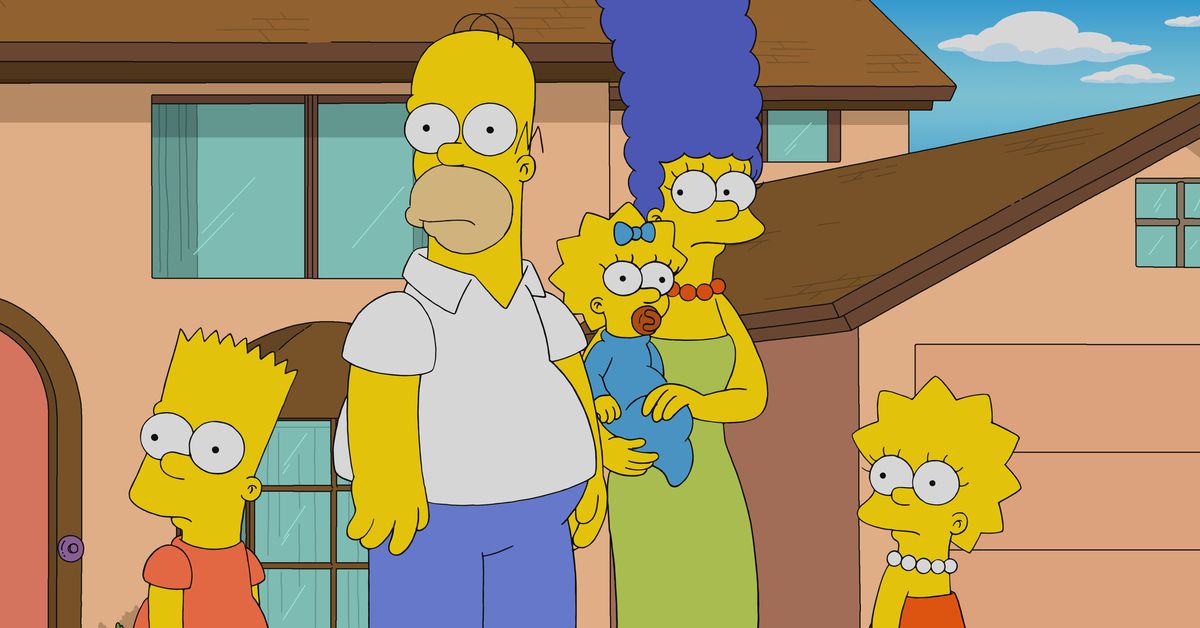The Four Biggest Story Lines Heading Into the Oscars
Written by on January 27, 2023
This piece was updated on January 27 with additional information after publication.
After the announcement of the Academy Awards nominations, some stories end while many others begin. Any speculation about, say, Tom Hanks getting a nomination in the Best Supporting Actor category for Elvis becomes moot. Other stories dramatically change shape, like Danielle Deadwyler’s once seemingly inevitable nomination for Till turning into a case study on whether the #OscarsSoWhite campaign has had any genuine long-term effect. If awards season were a movie, the unveiling of the Oscar nominees would be the dramatic twist that propels the story into the final act.
What form that act will take remains unclear. The Academy Awards ceremony is just six weeks away, but a lot can happen in that span as films make last-minute appeals to Academy voters while gaining and losing that intangible but undeniable quality that can make or break an award run: momentum. (Look no further than last year, when voters finally caught up with CODA and liked what they saw enough to hand it awards for Best Adapted Screenplay, Best Supporting Actor, and Best Picture.) Some of the narratives, however, took shape the moment the names were read. Below are four story lines worth following as Oscar night approaches.
The Best Picture race is wide open.
In many respects, this isn’t a new story but the latest chapter in an ongoing saga. The Best Picture category has been unpredictable since the Academy expanded the field beyond five nominees in 2009, blowing up the idea of what a Best Picture looks like. Consider the years leading up to it: Crash, one of the least deserving winners, took the prize in 2005, followed by The Departed, No Country for Old Men, and Slumdog Millionaire. Those three range in quality from “good movie” to “all-time masterpiece,” but they also have a touch of inevitability to them as ambitious efforts from well-established directors. None feel staid, but they do feel safe.
Now try to find a pattern in the last half decade of winners: The Shape of Water, Green Book, Parasite, Nomadland, and CODA. The shift from Green Book to Parasite alone is whiplash-inducing: One year brings a toothless depiction of racial harmony, the next a masterful and cutting class satire from South Korea. It’s almost as if Faye Dunaway mistakenly announcing La La Land instead of Moonlight were an omen of chaos to come. Best Picture is a field where a long shot can seemingly come out of nowhere and walk away with the top prize. (Again, look no further than CODA.)
So what about this year? Gold Derby, which combines the predictions of experts, the site’s editors, and registered users, currently has Everything Everywhere All at Once as the most likely winner. The site lays its odds at 13-2 compared to its closest competitors, The Banshees of Inisherin and The Fabelmans, which are both currently at 15-2, and Top Gun: Maverick and Tàr at 17-2. That looks like a tight competition.
In many respects, it does feel like Everything Everywhere All at Once’s year. The film has exceeded expectations at every turn, enjoying a long life in theaters and a swelling fan base that at times has resembled the hivelike fandom inspired by superhero movies. It’s an ideal Best Picture winner in so many ways: playful, cutting-edge filmmaking in the service of some pretty simple, laudable sentiments about empathy and familial love. But while Ke Huy Quan seems like a lock to win Best Supporting Actor and Daniel Kwan and Daniel Scheinert look likely to win the Best Original Screenplay prize, those might—might—also be the ceiling for EEAAO’s award hopes.
Banshees, Tár, and especially The Fabelmans, the most overtly personal film of Steven Spielberg’s career, could offer competition. A win for The Fabelmans would honor both Spielberg and a film fueled by a love of movies, however complicated that love might be. Both Banshees and Tár are complex and challenging while still being approachable enough for older voters, and each features a handful of great performances. And after the nearly universally loved Top Gun: Maverick helped prove that, yes, moviegoers do still want to go to theaters, it wouldn’t be a surprise if it received some gracious votes.
It’s also worth keeping an eye on some dark horses. Despite receiving mixed reviews when it arrived in theaters, Elvis hasn’t left the building (sorry), and Netflix’s All Quiet on the Western Front racked up nine nominations. Was anyone talking about All Quiet on the Western Front two weeks ago? Seemingly not. But here it is, and while it might not look like a winner now, who knows what the race will look like two weeks from now? (And, besides, there is precedent: A previous adaptation won the top prize in 1930.)
Further complicating matters: a changing voting body and a method of voting that sets Best Picture apart from other categories. The Academy pushed to diversify its membership starting in 2016 in response to the #OscarsSoWhite campaign, an initiative that, at times, has led to a wider set of winners. The ballot has changed too: Since the expansion of the category to include more films, the Best Picture award has employed preferential voting, meaning every voter ranks every nominee in their preferred order. That makes the Best Picture race harder to predict in any year, but especially in a year like this one, when there is no discernable favorite.
Where are the streaming services?
It’s not like Netflix and Apple, whose competition helped define the Oscars the past few rounds, sat the year out. They just didn’t have a lot of luck. Apple’s most likely contenders were The Greatest Beer Run Ever, Peter Farrelly’s follow-up to Green Book, which debuted to indifference, and Emancipation, which didn’t stir much critical enthusiasm and faced considerable Oscar headwinds due to the fact that its star disrupted last year’s ceremony by slapping Chris Rock. Amazon Studios had a similarly rough year: My Policeman and the Ron Howard–directed Thirteen Lives were both theoretical contenders at one point, but they faded quickly. And finally, over at Netflix, the studio did rack up some nominations thanks to the German adaption of All Quiet on the Western Front and, to a lesser extent, Guillermo del Toro’s Pinocchio and The Sea Beast, but it expected more—unfortunately, Alejandro Iñárritu’s Bardo, False Chronicle of a Handful of Truths, Blonde, Glass Onion, and White Noise managed just one nomination among them.
So what’s going on here? Just last year Being the Ricardos (Amazon) slugged it out with The Power of the Dog (Netflix) and CODA (Apple TV+). It’s certainly too soon to count streamers out of future awards seasons, but Netflix’s contracting budget and the still hazy picture of what streaming’s theatrical future will look like suggest that the era in which the Academy Awards doubled as a proxy battleground for media giants might be passing.
Andrea Riseborough’s surprise nomination is a multifaceted story.
It’s silly to call anything involving dozens of Hollywood stars and other media figures “grassroots,” but Riseborough’s successful campaign to be nominated for Best Actress for her performance in To Leslie was the result of a true groundswell—by which I mean an Edward Norton–sponsored screening, Gwyneth Paltrow Instagram posts, and Q&A sessions hosted by Kate Winslet and Amy Adams. The campaign went public in a big way on Twitter, when celebrity after celebrity (or their reps) tweeted out nearly identically worded words of support. Have you heard? It’s a “small movie with a giant heart.” Everyone from Allison Janney to Joe Mantegna says so.
This isn’t really anything new, even if it’s taken a new form. It’s essentially an old-fashioned campaign that’s playing out in a more public sphere than usual. As Vanity Fair’s Katy Rich notes, this is 2023’s equivalent of Sally Kirkland pushing herself into the Best Actress race for 1987’s Anna or Melissa Leo campaigning for herself for The Fighter and winning the Best Supporting Actress prize for her troubles. For smaller films—particularly ones as little seen as To Leslie—the road to the Oscars must be paved by very famous friends who probably owe a favor or two.
But the nomination is also a case of Riseborough being recognized for years of excellent but often unnoticed work. Since appearing in the (pretty good, slightly underappreciated) 2013 Tom Cruise blockbuster Oblivion, the English actress has mostly opted for lower-profile work, whether taking a supporting role in films like Nocturnal Animals and Battle of the Sexes or starring in top-rate indie genre movies like Mandy and Possessor. She’s committed, intense, chameleonic, and obviously respected. Cate Blanchett even took time out of her Critics’ Choice Award acceptance speech to praise Riseborough.
Yet while it’s never fair to say one nomination pushed out others, Riseborough was nominated while two Black contenders—Viola Davis for The Woman King and Danielle Deadwyler for Till—were not. That’s not Riseborough’s fault, but it does make this awards push part of another story involving the paucity of Black nominees, a problem that’s plagued the Academy for years and which it’s taken steps to correct. Riseborough’s campaign and nomination lay bare just how much of an advantage it still is to have famous and well-connected (and white) friends, which is exactly what led to the rise of the #OscarsSoWhite movement less than a decade ago.
Where Riseborough’s story goes from here is an open question. Certainly a lot of voters will now be checking out To Leslie, a film that barely played in theaters and earned around $27,000. Will the ascent of the film’s fortunes, and Riseborough’s stock, continue until she takes the top prize, or is this its peak? Riseborough would have to supplant both Tár’s Cate Blanchett and EEAAO’s Michelle Yeoh. That doesn’t seem likely. But it wouldn’t be the first time Riseborough defied expectations.
Update, Jan. 27: According to Puck’s Matthew Belloni, the Academy is now investigating whether Riseborough’s campaign violated Oscar rules, specifically how they restrict lobbying: “Contacting Academy members directly and in a manner outside of the scope of these rules to promote a film or achievement for Academy Award consideration is expressly forbidden.”
There’s a gulf between the films that get nominated and the films that make money.
The Academy’s recent attempts to pander to popular taste have been pretty embarrassing. Remember when “The Flash Enters the Speed Force” won the “fan-favorite award” for “ultimate cheer moment” the same year the awards for several established categories were pushed off the air? Grim stuff. But there is a reason for it: Some of the most acclaimed and most nominated movies of 2022 languished in theaters. You can already hear the tiresome “I’ve never heard of that movie and no one I know has ever seen it” tweets being drafted in advance.
Some of the struggling titles are pretty surprising, too. On the heels of West Side Story, The Fabelmans continued Steven Spielberg’s string of box office disappointments (with terrific movies, too). As of this writing, Tár has earned a little over $6 million, which makes it a blockbuster next to To Leslie but a disappointment considering it’s one of the year’s most universally acclaimed films. The old model of letting nominations boost a film’s box office doesn’t really work anymore, either. You can already watch The Fabelmans and Tár at home, and the same goes for Triangle of Sadness and The Banshees of Inisherin, the latter of which is already on HBO Max. Both those films fared better at the box office, but neither could be called a breakout hit. And while the Best Picture field also includes hits like Everything Everywhere All at Once and Elvis, and historically successful smashes like Avatar: The Way of Water and Top Gun: Maverick, their inclusion only accentuates the gap between blockbusters and everything else. (And if we’re being honest, a Best Picture win for The Way of Water or Maverick feels pretty out of reach at this point in the race.)
This is, of course, concerning given the ongoing emphasis on big franchise films above all other sorts of filmmaking. What’s the angle in backing prestigious movies if awards don’t help the bottom line? On the other hand, an unexpected hit like Everything Everywhere All at Once—a medium-sized film with a giant heart that takes different forms at different points across the multiverse—suggests that conventional wisdom goes only so far. The future of filmmaking, like Oscar races, could zig in an unexpected direction with little warning.
Keith Phipps is a writer and editor specializing in film and TV. Formerly: Uproxx, The Dissolve, and The A.V. Club.






